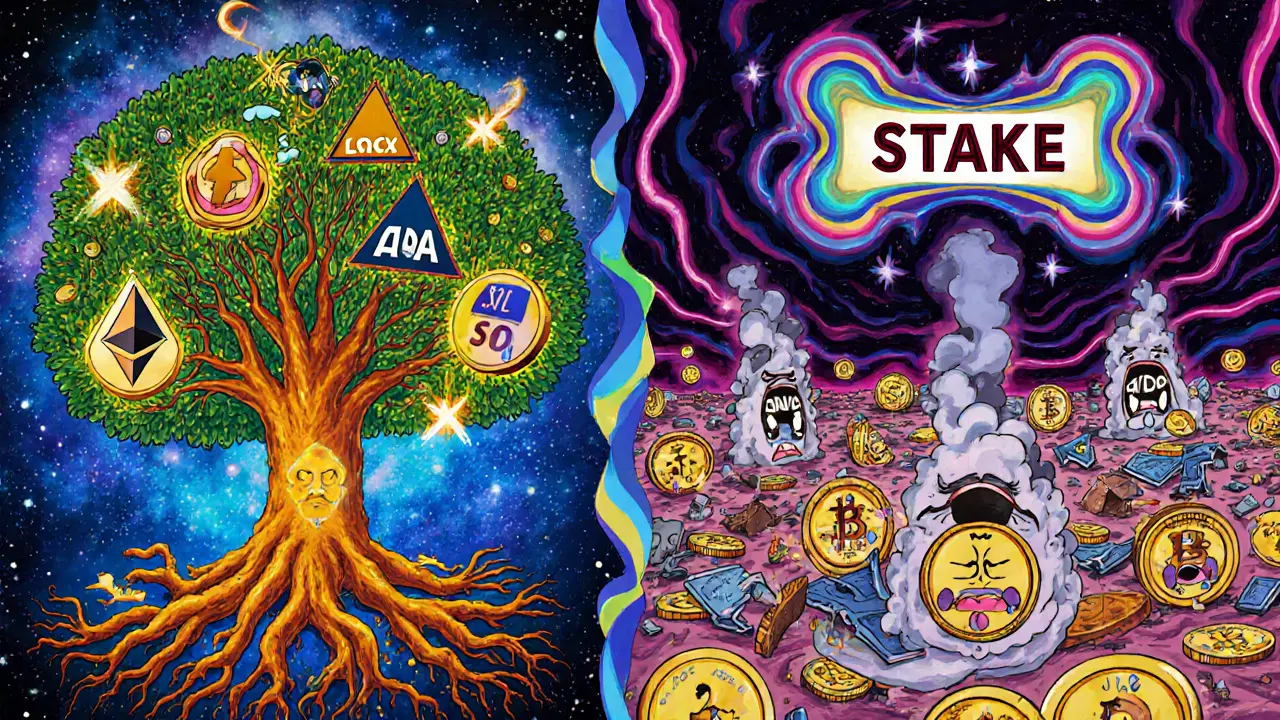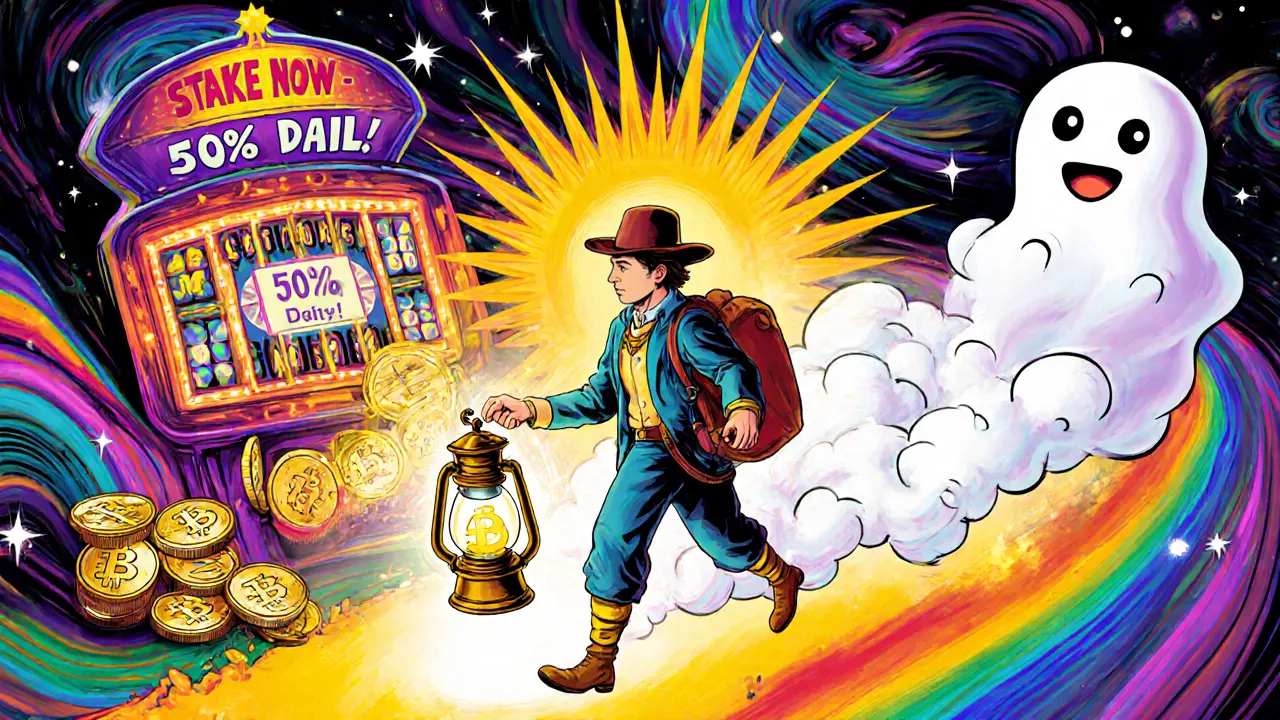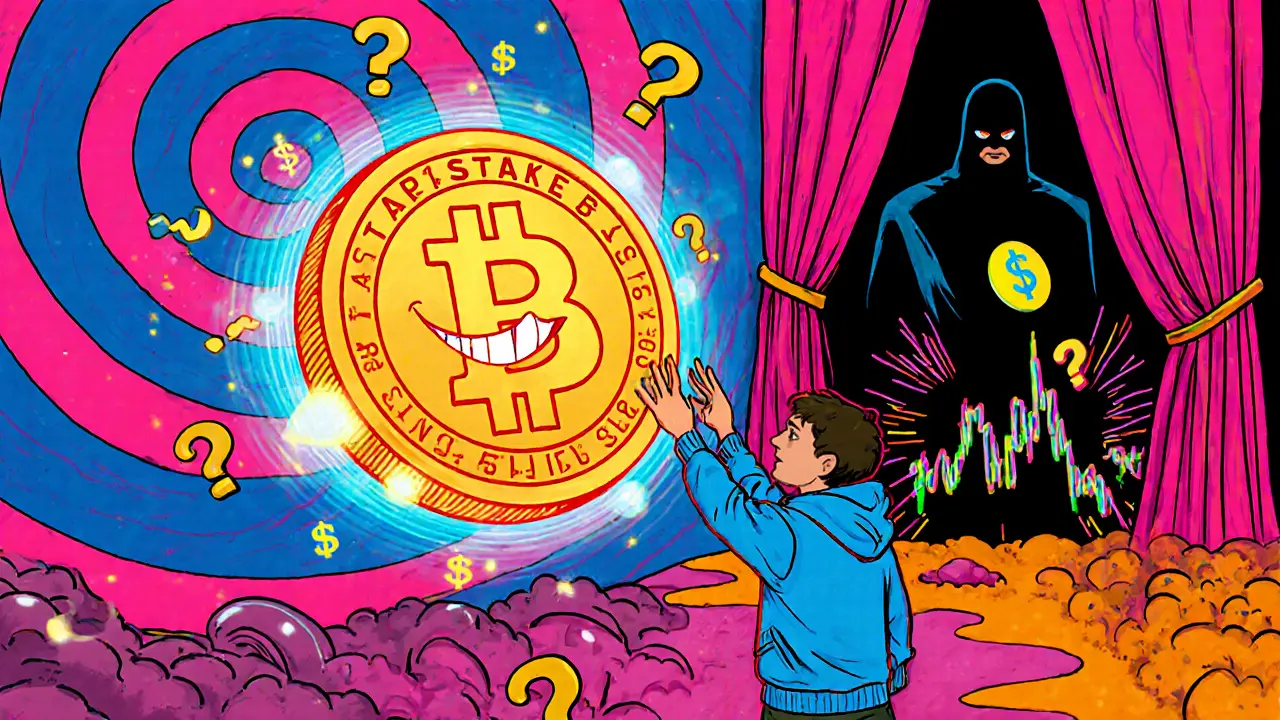Staking Token Validator
Check if a token is legitimate or a scam before investing
Check Token Legitimacy
There’s no such thing as a cryptocurrency called STAKE (STAKE). Not really. Not in any meaningful way. If you’ve seen it listed on a shady exchange, a Telegram group, or a YouTube ad promising 50% daily returns, you’re being misled. The word ‘stake’ isn’t a coin - it’s an action. It’s what you do with Ethereum, Cardano, Solana, or Polkadot to earn rewards. But someone out there is selling a fake token called STAKE, and people are losing money because they don’t know the difference.
Staking isn’t a coin - it’s a process
When you hear ‘stake your crypto,’ think of it like putting money in a savings account that pays interest. But instead of a bank, you’re locking up your cryptocurrency to help secure a blockchain network. In return, you get more cryptocurrency as a reward. This is called proof-of-stake (PoS). It’s how networks like Ethereum, Cardano, and Solana validate transactions without using massive amounts of electricity like Bitcoin does.
There’s no token named STAKE in this system. You stake ETH, not STAKE. You stake ADA, not STAKE. You stake SOL, not STAKE. The word ‘stake’ describes the act - not the asset. Confusing the two is like thinking ‘deposit’ is a bank account instead of the action of putting money in one.
Who’s selling STAKE - and why you should walk away
There are thousands of tiny, unknown tokens floating around crypto exchanges. Most have no team, no roadmap, no community, and no real use case. STAKE is one of them. Check CoinGecko, CoinMarketCap, or any reputable source - you won’t find it. Not in the top 1,000. Not even in the top 10,000. It doesn’t appear in Koinly’s 2025 staking report, Bankrate’s crypto guide, or CoinLedger’s list of stakable assets. Not one major analyst mentions it. That’s not an accident.
Scammers love to create tokens with names that sound like real crypto concepts. ‘STAKE’ is perfect for this. It’s short, familiar, and sounds official. They’ll list it on a fake exchange, pump the price with bots, then vanish. One user on Reddit reported buying ‘STAKE’ for $0.10 a token, watched it hit $0.50 in a week, then watched it crash to $0.001 - with no way to sell. No liquidity. No support. Just gone.
The real coins you can stake - and how they compare
If you want to earn rewards by staking, here are the actual cryptocurrencies you can use - all with real networks, real security, and real track records:
| Cryptocurrency | APR (Annual Return) | Minimum Stake | Network Security |
|---|---|---|---|
| Ethereum (ETH) | 2.48% | 32 ETH | Extremely high - largest staked value ($35.7B) |
| Cardano (ADA) | 4.1% | 1 ADA | High - proven consensus, strong community |
| Solana (SOL) | 7.58% | 0.01 SOL | Moderate - fast, but occasional network outages |
| Polkadot (DOT) | 15.31% | 350 DOT | High - multi-chain architecture |
| Cosmos (ATOM) | 25.17% | 1 ATOM | Medium - high reward, complex validator setup |
Notice anything? No STAKE. No fake tokens. Just real projects with transparent reward structures and active developer teams. Ethereum alone has over 17.8 million ETH staked. That’s more than the entire market cap of 99% of all cryptocurrencies. If STAKE were real, it would be on this list. It’s not. And that’s your first warning sign.

How to stake safely - and avoid STAKE scams
Staking is safe - if you do it right. Here’s how:
- Only stake through trusted platforms: Coinbase, Kraken, Binance, or Ledger Live. These have years of history and insurance for user funds.
- Never stake through an unknown website or app you found on social media. If it’s not on CoinMarketCap or CoinGecko, don’t touch it.
- Never send your private keys to anyone. No legitimate staking service will ask for them.
- Use hardware wallets like Ledger or Trezor if you’re staking large amounts. They keep your crypto offline and secure.
- Check the token’s contract address. If it’s not listed on Etherscan or Solana Explorer, it’s not real.
One user in New Zealand lost $8,000 last year after buying ‘STAKE’ from a Telegram bot that promised ‘double your money in 7 days.’ He thought he was staking ETH. He wasn’t. He was holding a worthless file with no blockchain backing.
Why STAKE doesn’t have a roadmap or team
Real crypto projects have whitepapers, GitHub repositories, Twitter accounts with real developers, and community Discord servers with hundreds of active users. STAKE has none of that. No GitHub. No team members listed. No updates since 2021. No developer activity. No audits. No partnerships. If a coin doesn’t have a public team or codebase, it’s not a project - it’s a shell game.
Compare that to Cardano, which has over 1,000 GitHub commits in 2025 alone, or Solana, which just launched its new validator optimization tools. These are living ecosystems. STAKE? Dead on arrival.

What happens if you already bought STAKE?
If you bought STAKE and it’s sitting in your wallet, you have two choices:
- Accept the loss. Most likely, it’s worthless. Don’t throw good money after bad trying to sell it.
- Try to sell it on a decentralized exchange like Uniswap or Raydium - but only if you know how. Many STAKE tokens have zero buyers. You might not be able to move it at all.
Either way, don’t expect to get your money back. Scammers don’t leave trails. And exchanges won’t help you recover funds from a token they never listed.
Bottom line: STAKE isn’t a coin - it’s a trap
The crypto world is full of noise. There are over 25,000 tokens out there. Most are meaningless. STAKE is one of the most dangerous because it uses a word everyone understands - and twists it to look legitimate. It preys on people who are new to crypto and don’t know the difference between a process and a product.
If you want to earn passive income from crypto, stick to the big names. Ethereum. Cardano. Solana. Polkadot. They’re real. They’re secure. They’re transparent. And they’ve been around long enough to prove it.
STAKE? It’s a ghost. A flicker on a fake chart. A name with no substance. Walk away. Save your money. And learn the difference before you lose it.

Write a comment